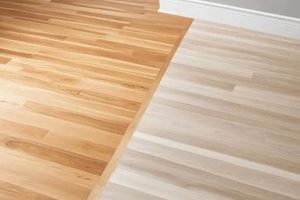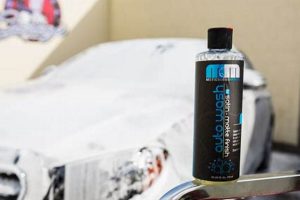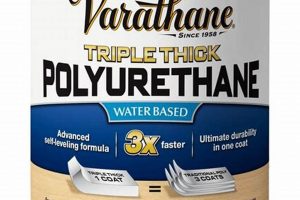A surface treatment applied to stainless steel results in a non-reflective, diffused appearance. This subdued sheen is achieved through various methods, often involving abrasion or chemical etching. For example, appliances or architectural elements may feature this type of surface to minimize glare and fingerprints.
This particular surface offers several advantages, including a reduced susceptibility to visible smudges and a more subtle aesthetic. Historically, it has gained popularity in applications where a clean, understated look is desired, and where the reflective properties of polished metal are undesirable. Its durability and ease of maintenance further contribute to its widespread use.
The following sections will delve into the specific techniques used to create this surface texture, examine its applications across diverse industries, and compare its performance characteristics to other stainless steel finishes. Furthermore, the article will address best practices for cleaning and maintaining this finish to preserve its appearance and longevity.
Preserving the Integrity of a Non-Reflective Stainless Steel Surface
The following guidelines outline essential practices for maintaining the aesthetic and protective qualities of a subdued stainless steel exterior.
Tip 1: Employ Gentle Cleaning Agents: Avoid abrasive cleansers or scouring pads. These can damage the surface and alter its intended appearance. Opt for pH-neutral detergents specifically designed for stainless steel.
Tip 2: Utilize Microfiber Cloths: These cloths are effective in removing dirt and fingerprints without scratching the surface. Dampen the cloth with the cleaning solution and wipe in the direction of the grain.
Tip 3: Address Spills Promptly: Immediate cleanup of spills, especially acidic substances, prevents staining and corrosion. Rinse the area thoroughly with water after cleaning.
Tip 4: Avoid Harsh Chemicals: Chlorine bleach and other harsh chemicals can discolor or corrode stainless steel. Read the labels of all cleaning products carefully before use.
Tip 5: Consider Protective Coatings: For high-traffic areas or environments prone to contamination, apply a specialized stainless steel protectant to create a barrier against stains and fingerprints. Choose products specifically formulated for the intended finish.
Tip 6: Regular Maintenance: Consistent cleaning prevents the buildup of dirt and grime, making maintenance easier in the long run. Establish a regular cleaning schedule based on the level of use and environmental factors.
Tip 7: Test in an Inconspicuous Area: Before applying any cleaning product to the entire surface, test it in a small, hidden area to ensure it does not cause discoloration or damage.
Adhering to these guidelines ensures the sustained beauty and functionality of stainless steel with a non-reflective surface. Proper care preserves the intended aesthetic and extends the lifespan of the material.
The subsequent sections will explore advanced maintenance techniques and address specific challenges related to preserving the integrity of this unique material finish.
1. Durability
The durability of stainless steel with a matte finish is fundamentally linked to the inherent properties of the stainless steel alloy itself, combined with the surface treatment applied to achieve the non-reflective aesthetic. The alloys resistance to corrosion, oxidation, and wear forms the foundation of its longevity. The matte finish, often achieved through mechanical abrasion or chemical etching, can subtly influence this inherent durability. While a polished finish might offer slightly superior resistance to certain types of localized corrosion due to its smoother, less porous surface, a matte finish, properly applied, does not significantly compromise the material’s overall durability. The textured surface can, in some instances, provide improved resistance to scratching and marring compared to a highly polished surface, as minor surface imperfections are less readily visible.
Consider, for example, stainless steel appliances with a matte finish used in commercial kitchens. The rigorous demands of such environments necessitate materials that can withstand frequent cleaning, exposure to harsh chemicals, and physical impact. The matte finish, in this context, offers a balance between aesthetic appeal and practical resilience. Similarly, architectural applications, such as exterior cladding on buildings in urban environments, benefit from the durability of stainless steel with this finish, as it resists weathering, pollution, and vandalism. The longevity of these installations demonstrates the practical significance of understanding the relationship between the material’s inherent properties and the applied surface treatment.
In summary, the durability of stainless steel with a matte finish is primarily a function of the underlying alloy’s composition and manufacturing process. The matte finishing process, when appropriately executed, does not detract from this inherent durability and, in some cases, may offer advantages in terms of scratch resistance. The careful selection of stainless steel grade and the appropriate finishing technique are paramount in ensuring long-term performance in demanding applications. Further research into specialized coatings and surface treatments can further enhance the durability and lifespan of this versatile material.
2. Cleanliness
Maintaining cleanliness in stainless steel featuring a matte finish presents specific considerations distinct from polished surfaces. While stainless steel inherently resists corrosion and inhibits bacterial growth, the texture of the matte finish influences cleaning protocols and outcomes.
- Reduced Reflectivity and Soil Visibility
The non-reflective surface of this material diminishes the visibility of minor imperfections and light soiling compared to highly polished stainless steel. However, this can lead to a delayed recognition of the need for cleaning. Regular inspection remains crucial, particularly in environments demanding stringent hygiene standards.
- Surface Texture and Contaminant Retention
The micro-textured surface, created through processes like bead blasting or etching, can potentially trap particulate matter and residues more readily than a smooth, polished surface. This requires more diligent cleaning practices to ensure complete removal of contaminants, particularly in food processing or pharmaceutical applications.
- Appropriate Cleaning Agents and Techniques
Abrasive cleaners and scouring pads should be avoided, as they can alter the surface texture and appearance of the finish. pH-neutral detergents and soft cloths are recommended for routine cleaning. In cases of stubborn stains or residues, specialized stainless steel cleaners designed for matte finishes should be considered.
- Passivation Layer Maintenance
The passivation layer, responsible for stainless steel’s corrosion resistance, can be compromised by harsh chemicals or abrasive cleaning methods. Maintaining the integrity of this layer is vital for long-term hygiene and material performance. Regular cleaning with appropriate agents aids in preserving the passivation layer.
In summary, achieving optimal cleanliness with stainless steel exhibiting a matte finish necessitates an understanding of its surface characteristics and the adoption of appropriate cleaning protocols. While the finish can conceal minor soiling, proactive cleaning practices are essential for maintaining hygiene and preserving the material’s integrity, particularly in environments where sanitation is paramount. Balancing aesthetic preferences with practical hygiene requirements is key to selecting and maintaining this finish effectively.
3. Aesthetics
The appeal of stainless steel with a matte finish resides in its understated elegance and versatility across diverse design contexts. Unlike its high-gloss counterpart, this finish diffuses light, minimizing glare and creating a softer, more uniform appearance. This quality lends itself well to environments where a subtle, sophisticated ambiance is desired, such as modern kitchens, minimalist office spaces, or high-end retail environments. The absence of strong reflections contributes to a sense of calmness and visual comfort, allowing other design elements to take precedence. The increasing preference for this finish reflects a broader trend towards more tactile and less ostentatious materials in contemporary design.
The aesthetic advantages of this finish also extend to its practical application. Its non-reflective surface is less prone to displaying fingerprints, smudges, and minor scratches, which are often more noticeable on polished stainless steel. This makes it a practical choice for high-traffic areas or surfaces subject to frequent handling. For instance, elevator panels, door handles, and appliance exteriors benefit from this inherent resistance to visible wear and tear, maintaining a cleaner and more professional appearance over time. Furthermore, its neutral tone complements a wide range of colors and materials, offering designers greater flexibility in creating cohesive and harmonious spaces.
In conclusion, the aesthetic value of stainless steel with a matte finish lies in its ability to convey sophistication, practicality, and versatility. Its non-reflective properties offer a subtle visual appeal, while its resistance to visible imperfections ensures long-term aesthetic performance. Understanding these characteristics allows for informed material selection in design projects, balancing aesthetic considerations with functional requirements. Future trends suggest an even greater integration of this finish in designs prioritizing user experience and visual comfort.
4. Maintenance
Effective maintenance is paramount to preserving the aesthetic and functional integrity of stainless steel with a matte finish. The surface characteristics of this finish necessitate specific cleaning and care protocols to prevent damage and ensure longevity. The following points outline key considerations for maintaining this material.
- Routine Cleaning Procedures
Regular cleaning is essential to prevent the accumulation of dirt, fingerprints, and other contaminants that can detract from the finish’s appearance. Mild detergents and soft cloths are recommended to avoid scratching or altering the surface texture. The frequency of cleaning should be adjusted based on the level of exposure to contaminants.
- Appropriate Cleaning Agents
The use of abrasive cleaners, scouring pads, or harsh chemicals should be strictly avoided. These materials can damage the finish and compromise its protective properties. pH-neutral cleaners specifically formulated for stainless steel are the preferred choice. Furthermore, it is advisable to test any cleaning agent in an inconspicuous area before applying it to the entire surface.
- Addressing Surface Imperfections
While stainless steel is relatively resistant to corrosion, surface imperfections such as scratches or stains can occur. Minor scratches can sometimes be mitigated with specialized stainless steel polishing compounds designed for matte finishes. For more severe damage, professional refinishing may be required to restore the original appearance.
- Preventative Measures
Implementing preventative measures can significantly reduce the need for intensive maintenance. These measures may include applying protective coatings to the surface, promptly cleaning spills, and avoiding contact with corrosive substances. In high-traffic areas, the use of protective barriers can minimize physical damage.
In conclusion, maintaining stainless steel with a matte finish requires a proactive approach that emphasizes gentle cleaning techniques, the use of appropriate cleaning agents, and preventative measures. Adhering to these guidelines ensures the sustained aesthetic appeal and functional performance of the material over its lifespan. Failure to properly maintain the finish can lead to irreversible damage and necessitate costly repairs or replacements.
5. Manufacturing Process
The creation of a matte surface on stainless steel is intrinsically linked to specific manufacturing processes that alter the material’s surface texture. These processes are carefully selected to achieve the desired aesthetic and functional properties of the final product. The manufacturing method directly impacts the uniformity, durability, and overall quality of the resulting finish.
- Abrasive Blasting (Bead Blasting/Sandblasting)
This process involves propelling abrasive media, such as glass beads or sand, at high velocity against the stainless steel surface. The impact of the media creates a uniform, textured surface that diffuses light, resulting in a matte appearance. The choice of media and air pressure controls the roughness and overall aesthetic. Examples include bead-blasted stainless steel control panels in industrial equipment, where the matte finish reduces glare and improves readability. Improper blasting can lead to inconsistent finishes or surface contamination.
- Brushing/Satin Finishing
This technique utilizes abrasive belts or wheels to create a unidirectional texture on the stainless steel. The resulting finish has a subtle, linear grain that imparts a soft, matte-like appearance. Brushed finishes are commonly found on appliances and architectural elements, providing a visually appealing and fingerprint-resistant surface. The grit size of the abrasive material determines the coarseness of the brushed texture, which can affect the overall aesthetic and cleaning characteristics.
- Chemical Etching
Chemical etching involves selectively removing material from the stainless steel surface using corrosive chemicals. This process can create a uniform matte finish by roughening the surface at a microscopic level. Chemical etching is often used for intricate designs or applications where precise control over the surface texture is required. For example, chemical etching can be used to create matte finishes on stainless steel nameplates or decorative panels. The concentration and type of etchant, along with the duration of exposure, determine the depth and texture of the etched surface.
- Electropolishing followed by Matte Finishing
Electropolishing is used to create a very smooth surface to start with. The Matte finishing will make surface uniform, textured surface that diffuses light, resulting in a matte appearance. Examples include stainless steel control panels in medical equipment.
The selection of the appropriate manufacturing process is crucial in achieving the desired matte finish on stainless steel. Each method offers unique advantages and limitations in terms of cost, consistency, and suitability for specific applications. Careful consideration of these factors is essential to ensure the final product meets the required aesthetic and functional specifications.
6. Applications
The selection of stainless steel with a matte finish is directly driven by the intended application and its specific requirements. The surface properties of this material dictate its suitability for various contexts, ranging from architectural elements to medical equipment. A primary cause for its selection lies in the reduction of glare, an important factor in environments where visual comfort and clarity are paramount. For example, in operating rooms, instrument panels made of this material minimize reflections, thereby reducing eye strain for surgeons. The effect of this choice is improved visibility and reduced risk of errors during critical procedures. Similarly, in elevator interiors, the diffuse reflection of a matte finish creates a more comfortable and aesthetically pleasing environment for passengers. Without this finish, the stark reflections of polished metal could be distracting and undesirable.
The importance of applications as a key component in understanding stainless steel with a matte finish is further underscored by considerations of hygiene and maintenance. In food processing plants, the resistance of this material to corrosion and its ability to withstand frequent cleaning cycles are crucial. While a polished surface might seem easier to clean, the matte finish often conceals minor scratches and imperfections that can harbor bacteria. This makes it a preferred choice in environments where maintaining a sterile environment is paramount. Furthermore, its resistance to fingerprints and smudges makes it suitable for high-traffic areas, such as public restrooms and kitchen appliances. The practical significance of understanding these applications stems from the need to balance aesthetic appeal with functional requirements.
In summary, the applications of stainless steel with a matte finish are diverse and driven by specific performance needs. The choice of this material is not merely an aesthetic one; it is a functional decision based on factors such as glare reduction, hygiene, and maintenance requirements. The challenges lie in carefully selecting the appropriate grade of stainless steel and the specific finishing process to ensure that the material meets the demands of the intended application. The relationship between applications and the material’s surface properties is crucial for optimizing performance and ensuring long-term durability.
Frequently Asked Questions
This section addresses common inquiries regarding stainless steel exhibiting a non-reflective, diffused surface, aiming to provide clarity and dispel potential misconceptions.
Question 1: Is a stainless steel matte finish more susceptible to corrosion than a polished finish?
The corrosion resistance of stainless steel is primarily determined by its alloy composition, not the surface finish. While a polished surface may offer slightly better resistance to specific forms of localized corrosion due to its smoothness, a properly applied matte finish does not significantly compromise the material’s overall corrosion resistance. Routine cleaning is vital to maintain the integrity of the passive layer.
Question 2: Does a stainless steel matte finish require specialized cleaning products?
Abrasive cleaners and scouring pads are not recommended, as they can damage the surface texture. pH-neutral detergents specifically designed for stainless steel are the preferred choice. Heavily soiled surfaces may require specialized stainless steel cleaners formulated for matte finishes, but these should be used sparingly and according to the manufacturer’s instructions.
Question 3: Is a stainless steel matte finish more prone to staining than other finishes?
The textured surface can potentially trap contaminants, making stains more noticeable if not promptly addressed. However, the absence of glare on a matte finish often hides minor stains better than a polished surface. Immediate cleaning of spills, especially acidic substances, is crucial to prevent permanent staining.
Question 4: Can a stainless steel matte finish be repaired if scratched?
Minor scratches can sometimes be mitigated with specialized stainless steel polishing compounds designed for matte finishes. However, deep scratches or significant damage may require professional refinishing to restore the original appearance. The feasibility of repair depends on the severity and extent of the damage.
Question 5: Is a stainless steel matte finish more expensive than other finishes?
The cost of a stainless steel matte finish can vary depending on the specific manufacturing process used to create it. Abrasive blasting may be less expensive than chemical etching or specialized coating techniques. Therefore, a direct comparison of costs requires considering the specific finishing method.
Question 6: Does a stainless steel matte finish offer any advantages in terms of scratch resistance?
The textured surface can, in some instances, provide improved resistance to visible scratching and marring compared to a highly polished surface, as minor surface imperfections are less readily apparent. However, the finish itself is still susceptible to scratches if subjected to abrasive forces. Regular cleaning and care are necessary to minimize the risk of damage.
In summary, stainless steel with a matte finish offers a distinct aesthetic and functional profile, requiring careful consideration of cleaning protocols and potential maintenance challenges. Its durability and corrosion resistance, when properly maintained, remain comparable to other stainless steel finishes.
The following section explores advanced topics related to the long-term performance and sustainability of stainless steel with a matte finish.
Conclusion
The preceding discussion has illuminated various facets of stainless steel with a matte finish, encompassing its properties, manufacturing processes, applications, and maintenance requirements. The analysis reveals a material option characterized by a distinct aesthetic appeal, offering a balance between visual subtlety and functional resilience. The proper selection and maintenance of this material, informed by a comprehensive understanding of its characteristics, are crucial for optimizing performance and ensuring longevity.
Therefore, a continued focus on research and development in surface treatments and cleaning technologies is warranted to further enhance the performance and sustainability of stainless steel featuring a non-reflective surface. Informed decision-making, grounded in a thorough understanding of the material’s properties and application-specific requirements, remains paramount in maximizing its value across diverse sectors. The long-term success of employing this material hinges on a commitment to best practices in both its implementation and ongoing care.







